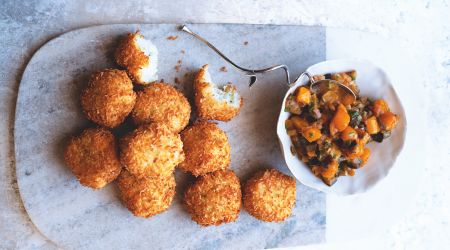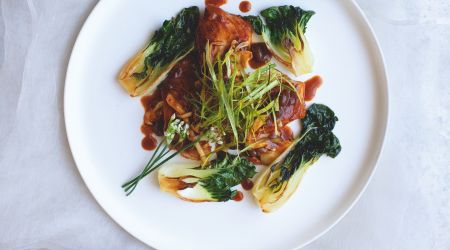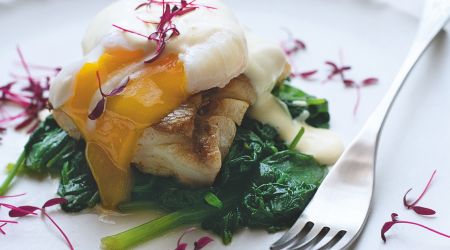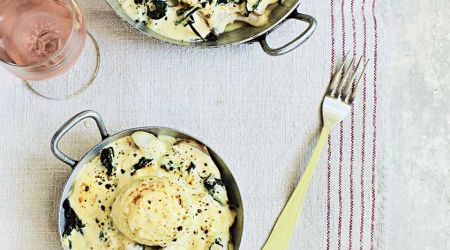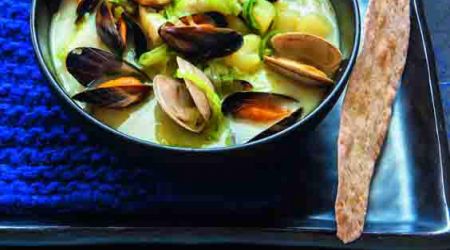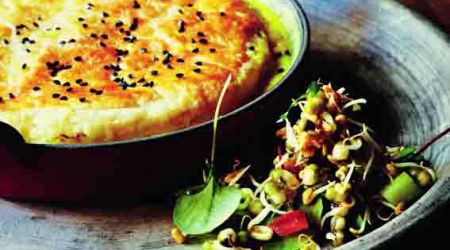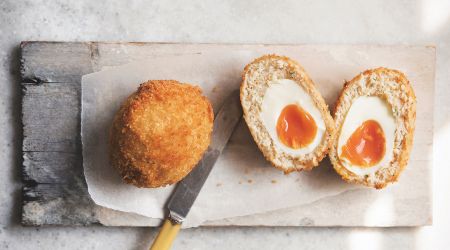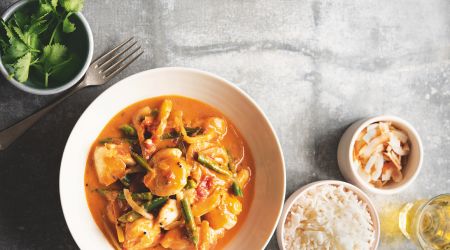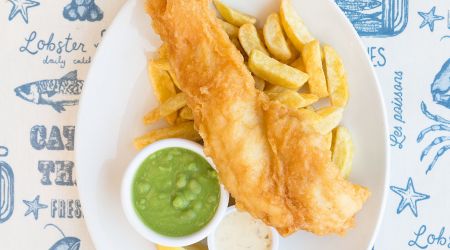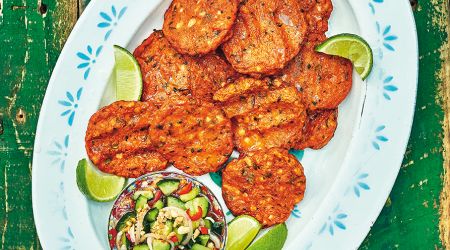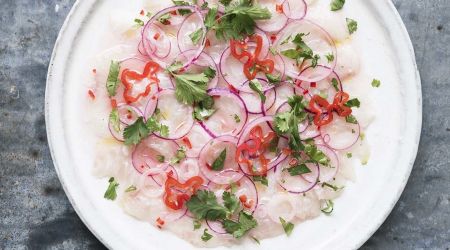Haddock
Got a favourite cod recipe? Consider using haddock instead. Finer textured and delicate in flavour, it promises to raise big smiles around the table. Clarissa Hyman has the low-down
Among the rather illustrious cast of characters created by PG Wodehouse, the devastatingly handsome Mr Esmond Haddock, a preternaturally good-looking cove if ever there was one, is noted for his unfortunate possession of a gaggle of five overbearing, overcritical aunts, as well as being heir to the Haddock’s Headache Hokies fortune. Wodehouse instinctively understood the word is one of comic genius: haddock is not one that can be uttered without a guffaw or, at the very least, a wry grin.
Unlike its namesake, it is not a particularly attractive fish, brownish-grey and rather dull looking, resembling a small cod,
although the haddock has a smaller mouth, a more pointed snout, slimmer body and more concave tail. In particular, it is distinguished by a distinctive black mark on its side like a smudged thumbprint. Yet it remains one of the UK’s most popular fish choices. Low in fat and high in protein, it’s a mainstay of chip shops throughout the land, though you might get a few funny looks down the chippy if you ask for a portion of Melanogrammus aeglefinus.
The haddock is a bottom-dwelling creature that inhabits the gravelly, sandy and pebbly seafloor at a depth of 40-150m. It is found across the North Atlantic from New England in the west to the northern part of the Bay of Biscay, though Scottish haddock has the finest reputation. There is a maximum-catch quota in place and landed fish must be of a minimum size, so that stocks remain sustainable. Fish from the Irish Sea, Rockall, the North East Arctic and Iceland are at healthy or sustainable levels: as ever, it’s best to buy MSC-certified catch. When buying long-line-caught haddock, ask for fish caught using ‘seabird-friendly’ methods.
Haddock fillets are the most popular way of buying and using the fish, and these can be cooked according to any cod or coley recipe. The Dutch are particularly partial to serving it poached with a sauce made from small brown prawns; in Hamburg haddock steaks are baked with potatoes in a sour cream sauce; a traditional Danish dish is ‘green-salted’ haddock that involves salting haddock for 12 hours, then poaching it and serving with carrots, onions and potatoes.
Nick Fisher of the River Cottage family describes haddock as doing anything cod can do and just as well – if not slightly better. As he says, ‘It’s a matter of mouthfeel as much anything: haddock is a little finer textured and more delicate.’ Traditional flavour pairings include parsley, milk, bay leaf, dulse seaweed and Cheddar cheese. More contemporary ones lean towards the Mediterranean, and include fennel, capers and tomatoes or garlic, green beans and artichokes. It is a popular ingredient in curries and stir-fries.
The Scandinavians are also highly fond of this northern, deep-water, shoaling fish: many regard it as even superior to the cod, and hold the roe to be a particular delicacy. The fine folk of the Faroe Islands like their haddock ‘matured’ – left to hang until semi- rotted on outside rails, a similar practice to the production of equally evil-smelling Norwegian boknafisk. As the late William Black noted, ‘For some peculiar reason, the idea that fresh fish isn’t good for you took root in Scandinavia centuries ago, and many still believe it to be true.’
Haddock doesn’t salt as well as cod, so the traditional ways of curing were by drying and smoking. The latter is a traditional favourite in the British Isles, although it can be the best of fish or the worst of fish. Unfortunately, the practice grew up after the Second World War, when the smoking process was reduced to save costs, but resulted in a pale, wan fish disliked by consumers. An infusion of colour was required and neon ‘stinky’ fish, as my family used to call my father’s teatime favourite, became a supermarket staple.
The colouring generally used to be E104, or Quinoline Yellow, a synthetic coal-tar dye that has been linked to hyperactivity in children. Today, curcumin, derived from turmeric, is usually used instead, although it is still an artificial way of making the fish look more smoked. The luminous yellow or orange synthetic dyed haddock is still around, but at least we now also have the option of buying excellent, straw-coloured, undyed fish.
Equally loved, especially north of the border, are Arbroath smokies – small haddock that are headed and gutted, dry salted, tied in pairs and hot-smoked over a hardwood fire. Just as iconic are Finnan haddocks or haddies, named after the village of Findon, near Aberdeen, and the basis of the much-loved Cullen skink soup. The fish is split but with the central bone left in before they are smoked. Originally, they were heavily smoked over peat but are now cold-smoked in wood to produce a fish more acceptable to modern palates that still has a distinctive flavour. In the understated words of the legendary Scots cookery writer Marian McNeill, ‘The smokie, like the Finnan haddie, makes an excellent savoury.’
At one time, the taste spread as far as to the United States, where they were produced in enormous quantities in both Portland and Boston. At Provincetown on Cape Cod, haddock used to be split, salted and dried, after which they bore the wonderful Woosterish name of ‘scoodled skulljoes’. PG himself really couldn’t have put it better. What ho!

Recipes
Get Premium access to all the latest content online
Subscribe and view full print editions online... Subscribe

